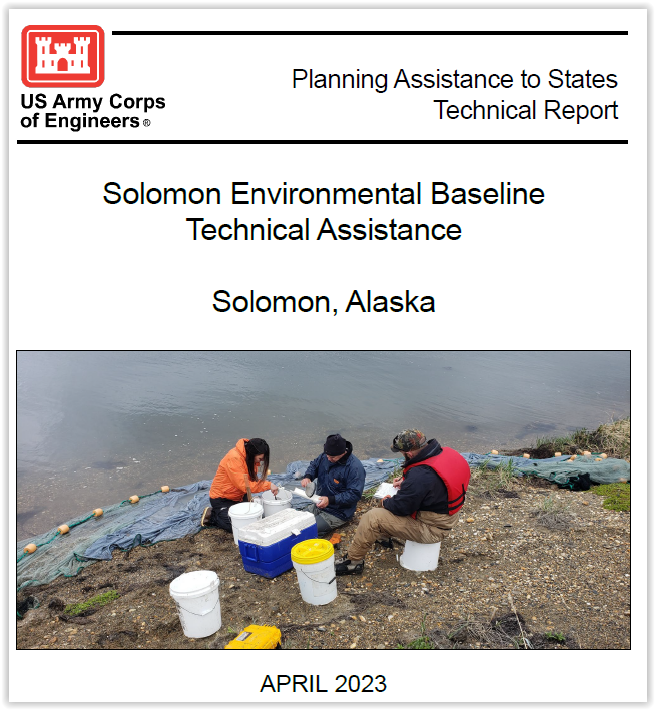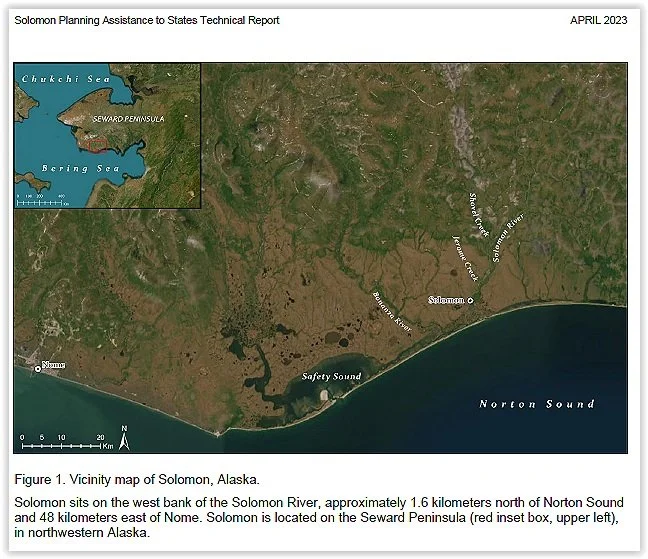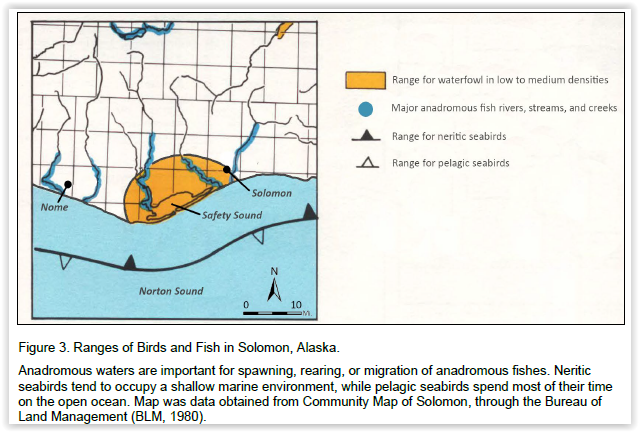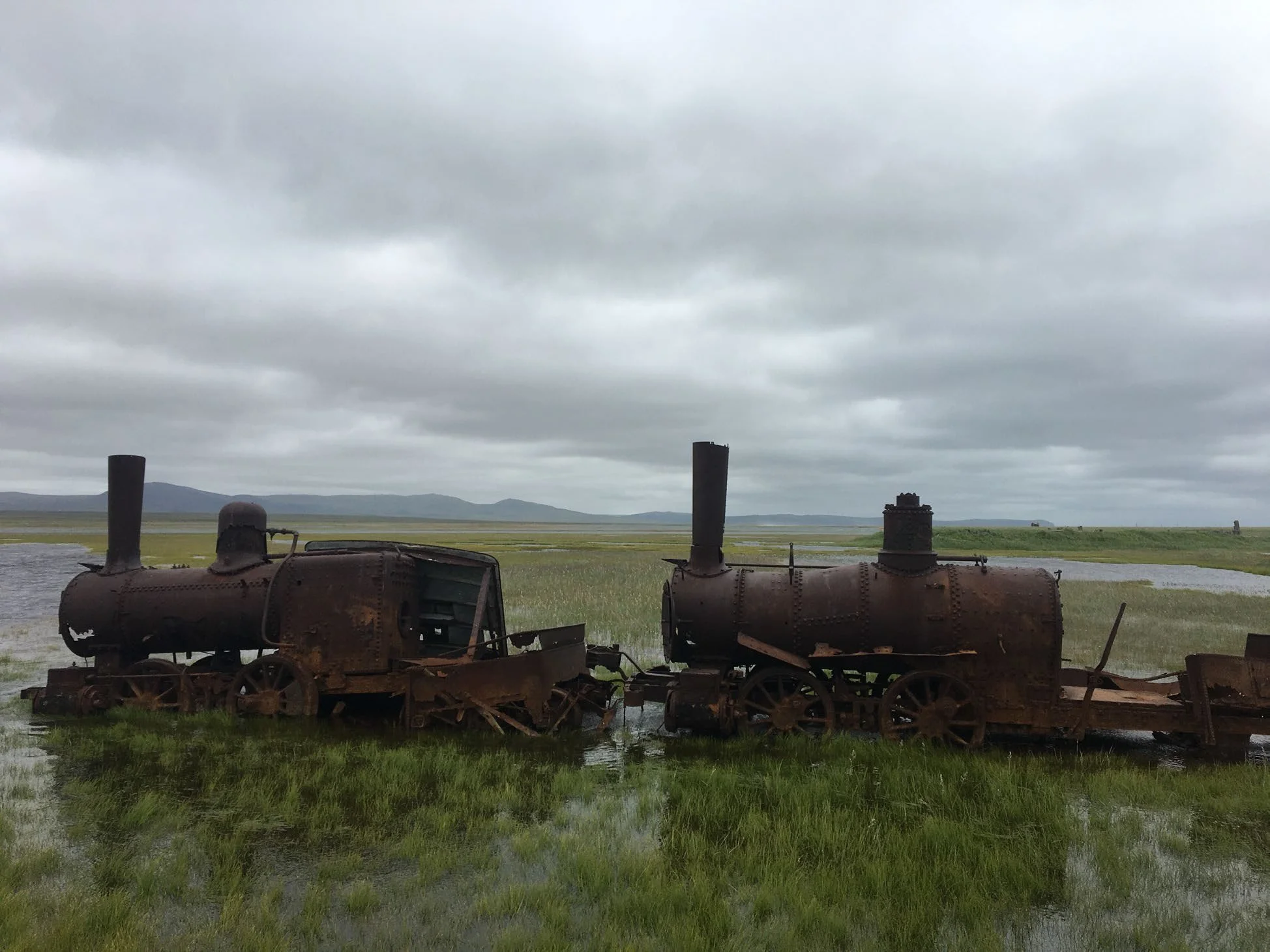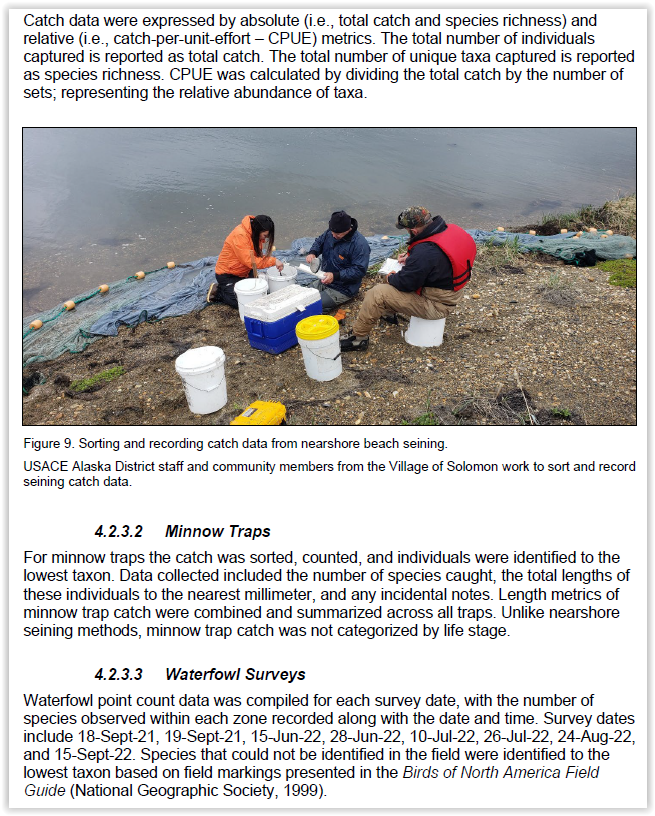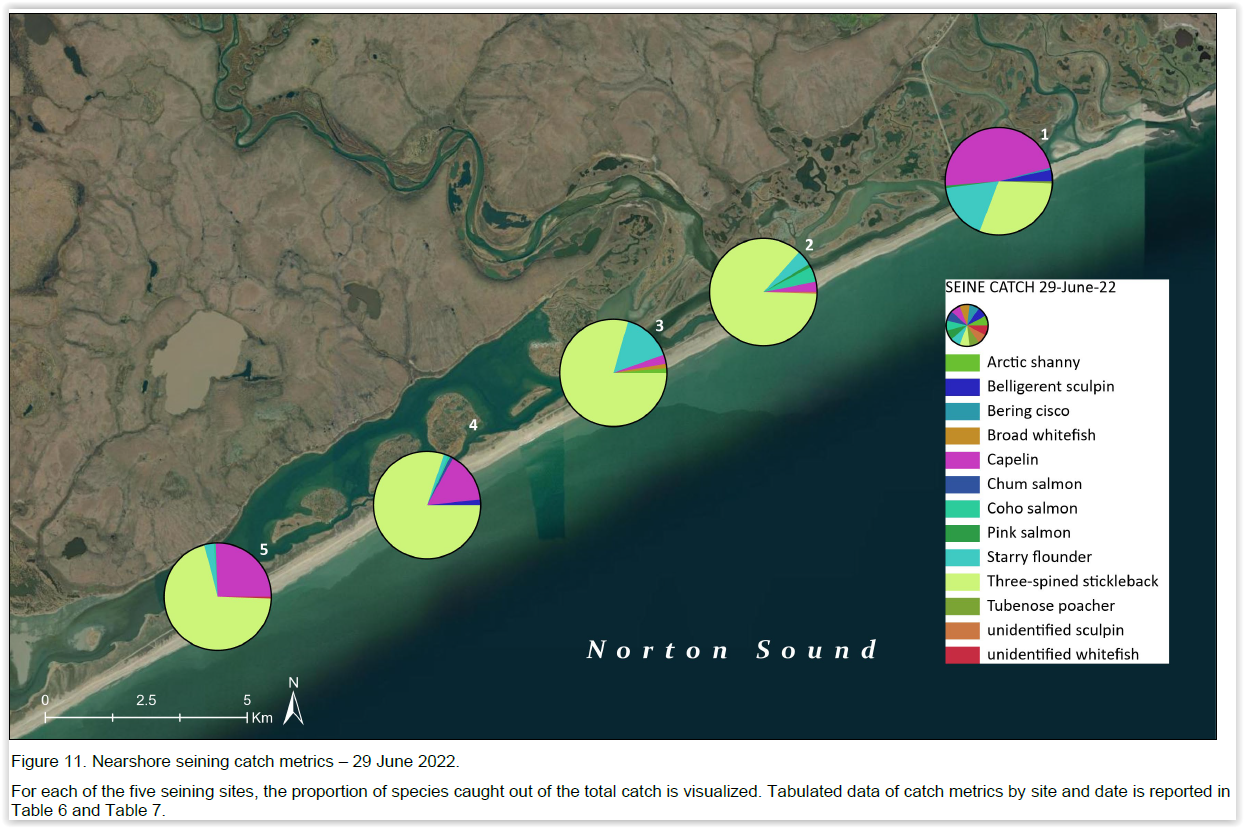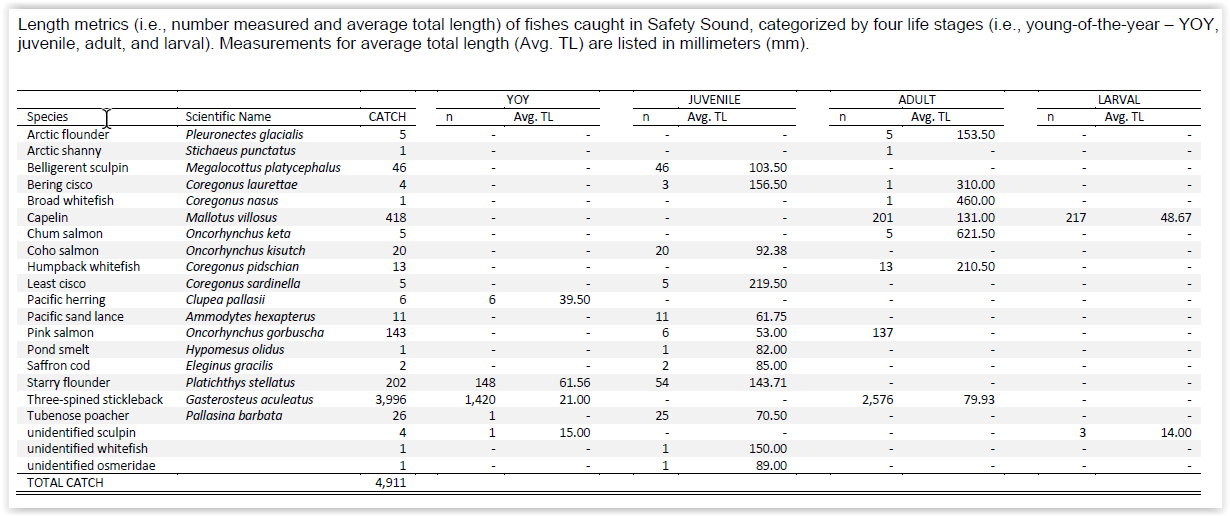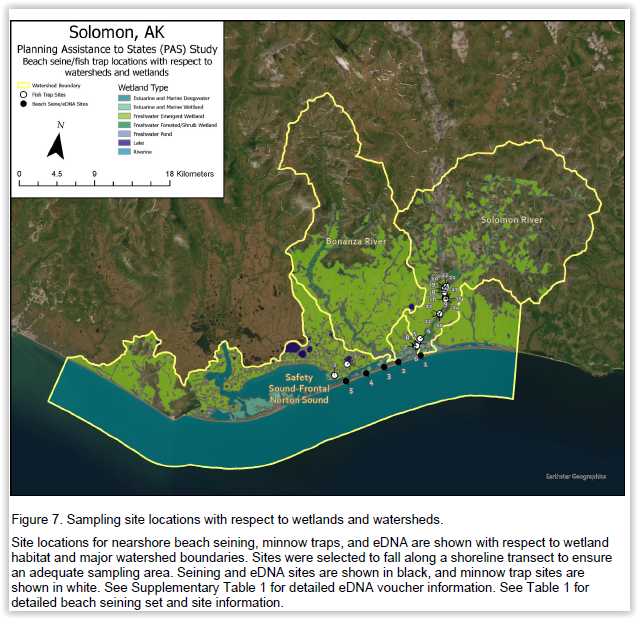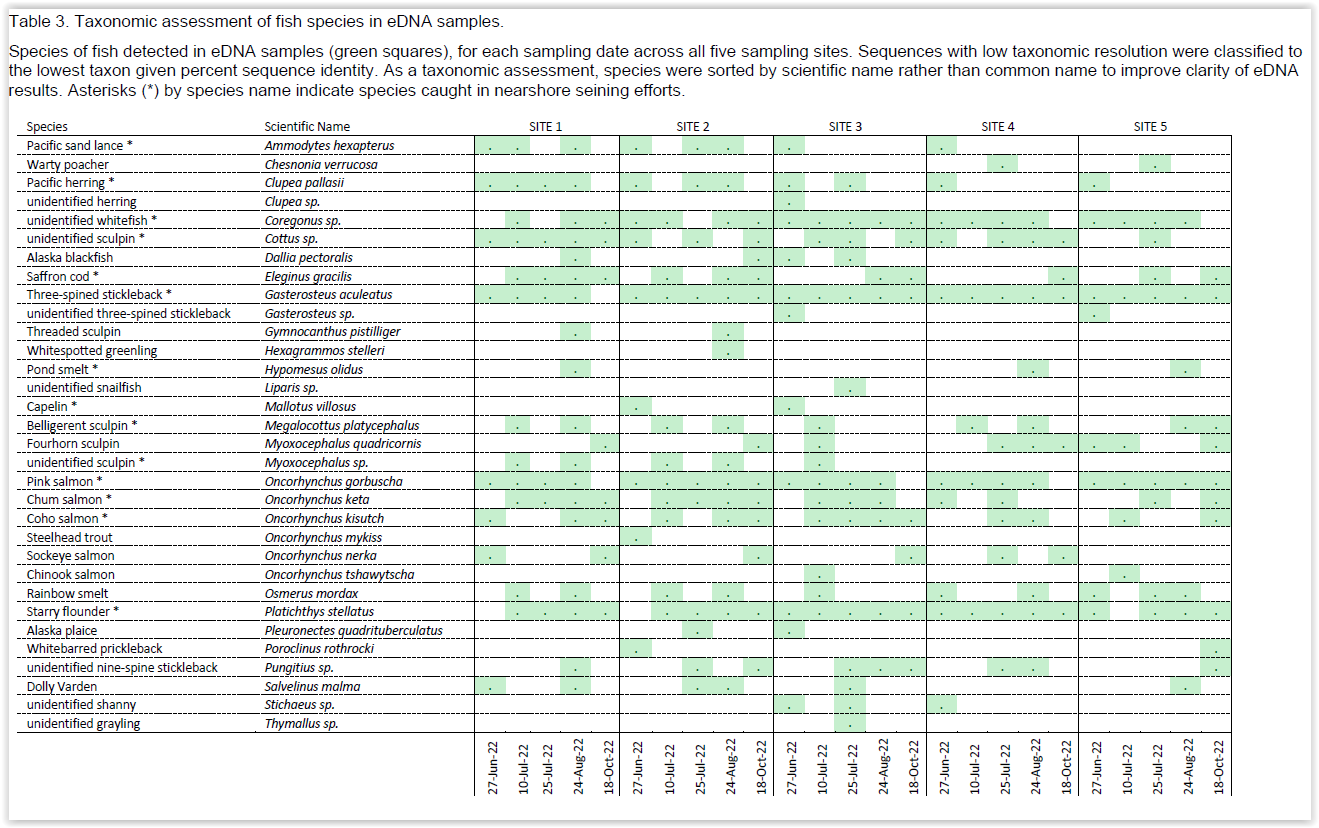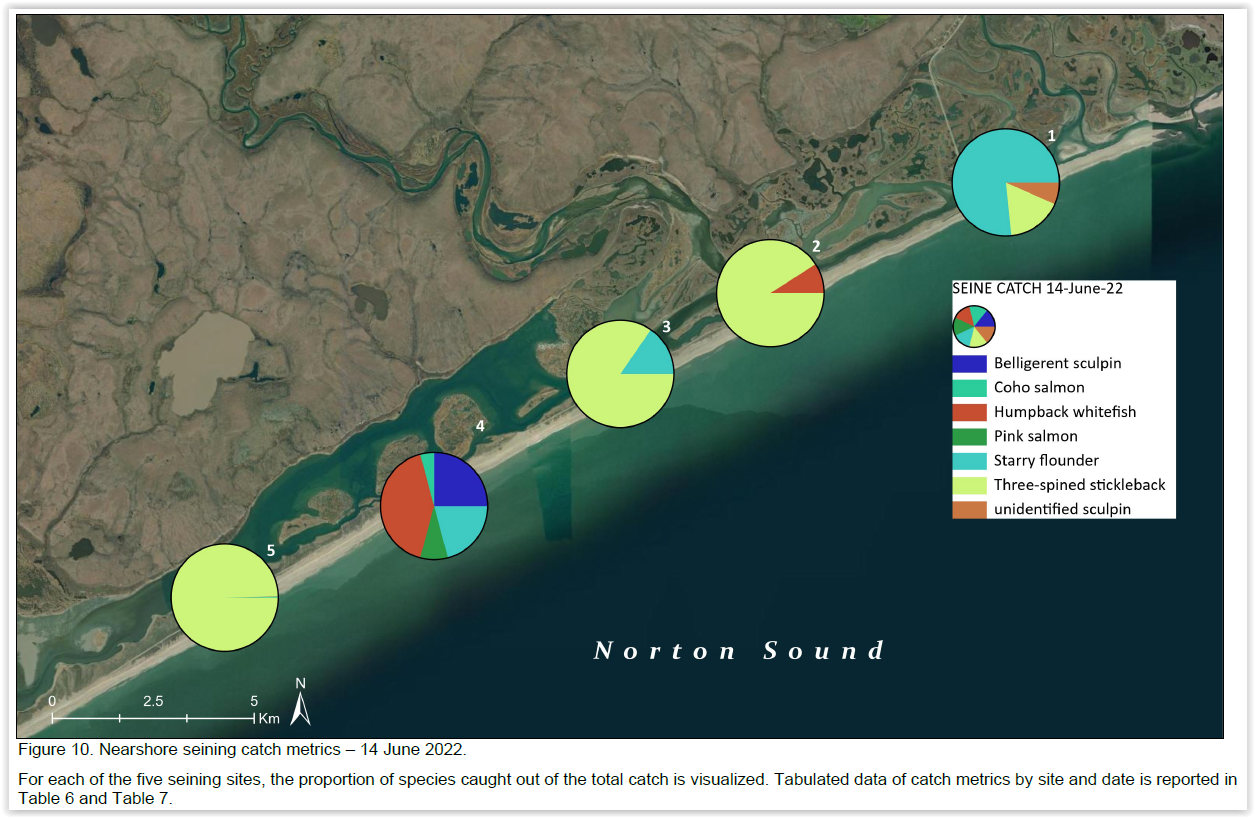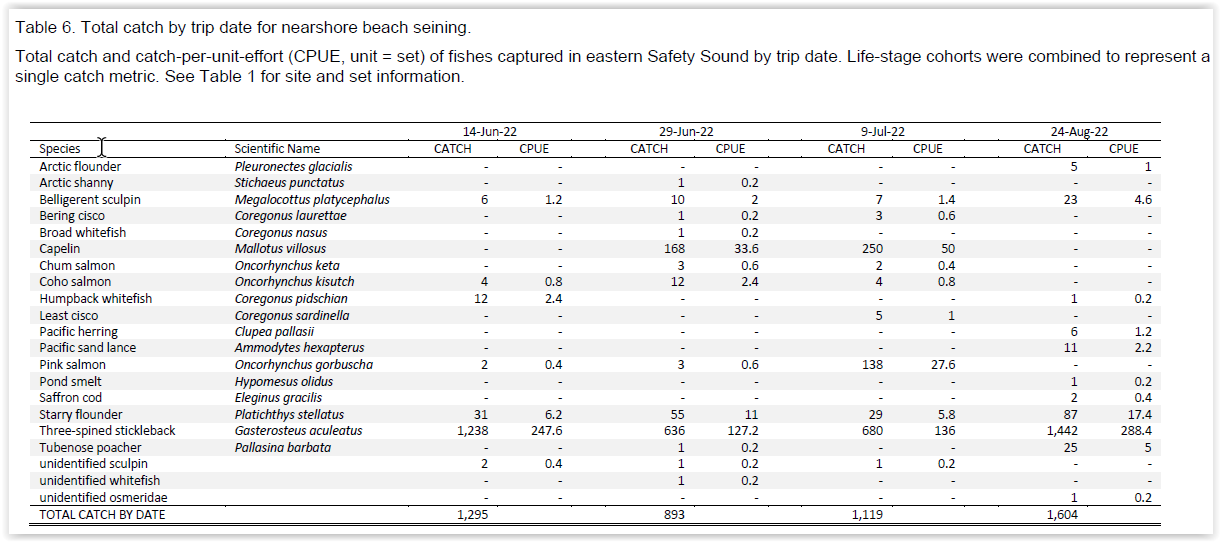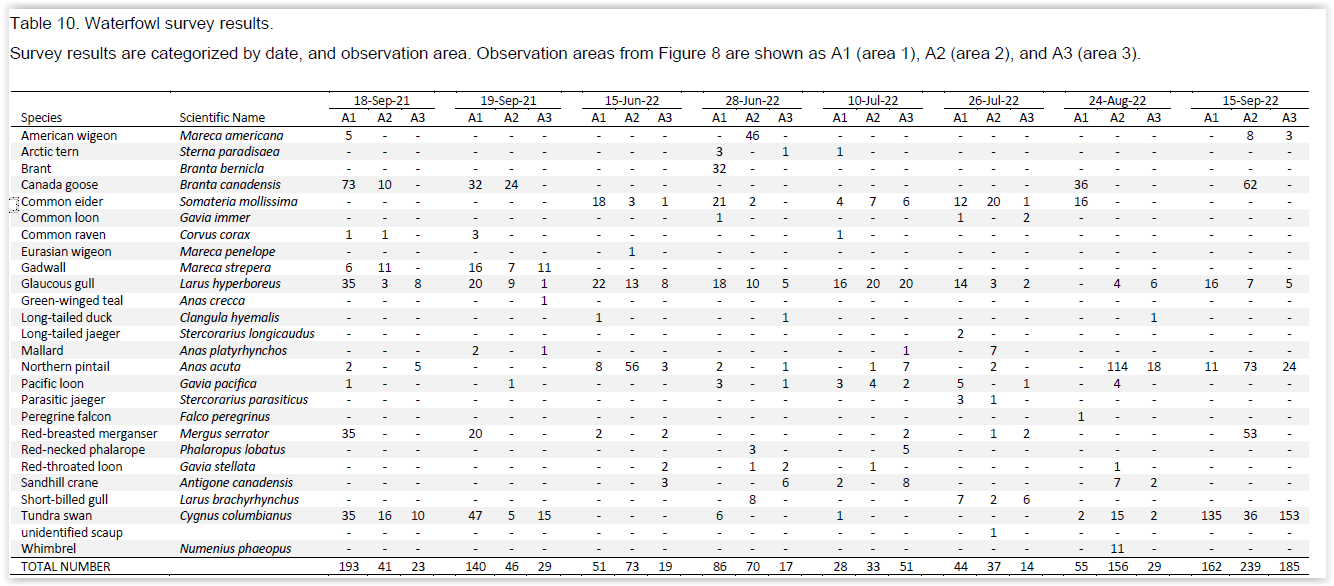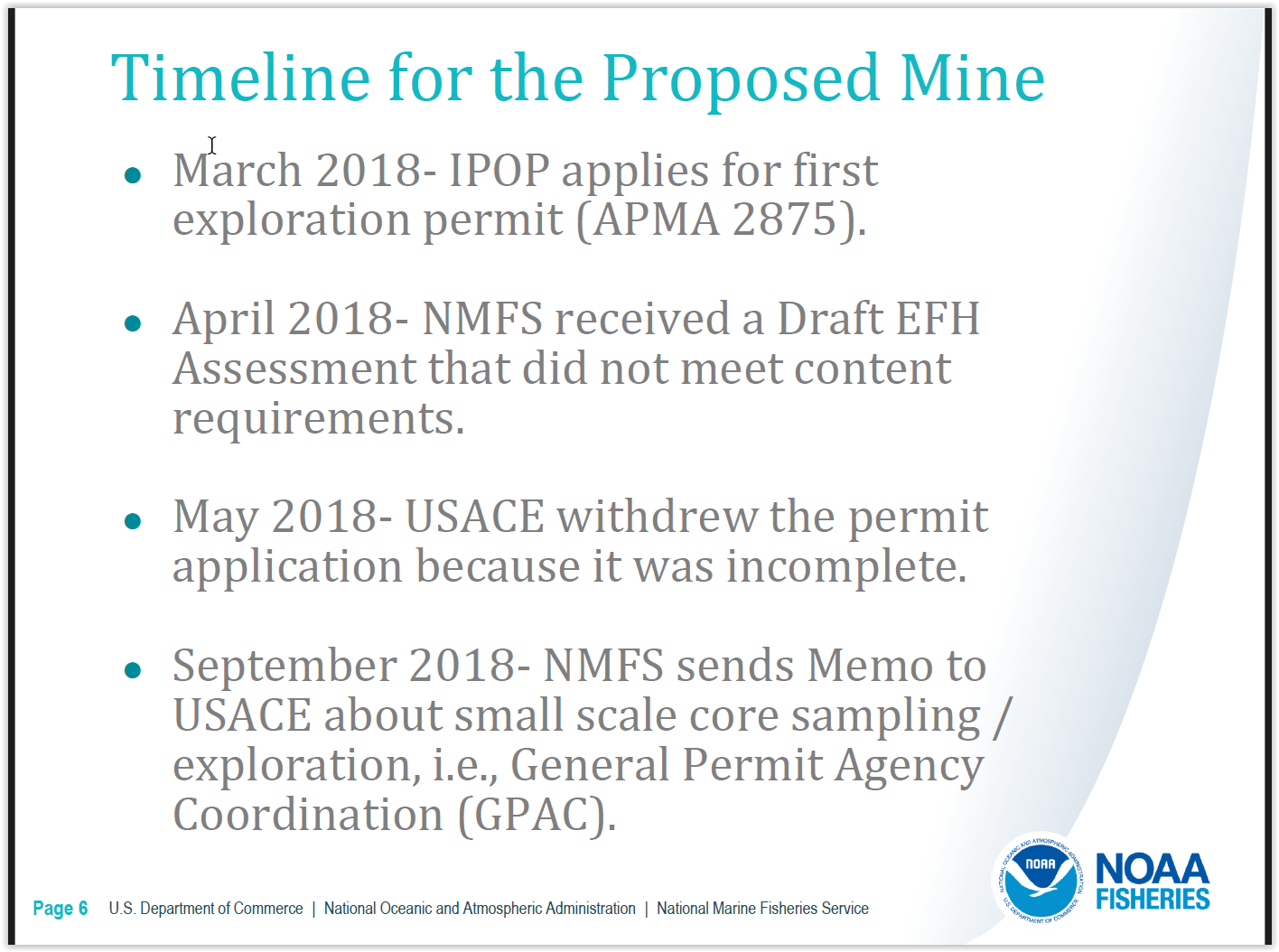
What is the Bonanza Channel Significance?
This page is to highlight all of the wonders within the Estuary
Village of Solomon Tribal Community
The Village of Solomon is the closest tribe located right next to the Estuary. The people of Solomon have been managing and living off of the estuary long before the State of Alaska became a part of the US. For more information on the Village of Solomon tribe, please check out their own website:
USACE Alaska District conducted multiple environmental surveys throughout 2021 and 2022 to characterize terrestrial, freshwater, and estuarine biodiversity within Safety Sound and the area near Solomon. These included beach seining for nearshore fishes within Safety Sound, setting minnow traps within freshwaters, and conducting traditional waterfowl surveys.
4.2.1 Survey Categories
4.2.1.1 Fishes
We focused on sampling the estuarine fish communities within the eastern end of Safety Sound. Assessing fish communities within estuarine environments is important since these areas are critical for species during sensitive early life stages (Dahlgren et al., 2006; Larson et al., 2022). While previous fish research in Safety Sound had a species-specific focus on salmon (Hillgruber and Zimmerman, 2009), our methods expanded the focus to a multi-species approach to encompass fish within Safety Sound across all life-history stages (i.e., larval to adult fish). The intent of our choice in methodology was to provide a broader picture of fish species present in Safety Sound. Additionally, sampling efforts in our investigation included a temporal and spatial component. Sampling occurring across the summer and fall of 2022, and our five beach seining sites were spread over 11.1 kilometers of coastline (Figure 7; Table 1).
Minnow traps were also used in freshwater lakes near Solomon and in tributaries of the Solomon River (Figure 7; Table 2). The goal here was to document the presence of juvenile salmonids and other fishes to expand the understanding of these important anadromous habitats. While known species and spatial extents of anadromous fish are documented in the anadromous catalog, species presence and habitat use data were lacking for juvenile fishes. Minnow traps were also used on a small number or pond and channel sites in Safety Sound near Solomon where beach seines could not be used.
4.2.1.2 Waterfowl
In Alaska, many species of waterfowl migrate to the Arctic to breed during the boreal summer (Winker and Gibson, 2010). Safety Sound and the surrounding nearshore environment is ideal habitat for waterfowl species. These wetlands provide critical stopover habitat during migration in addition to ideal breeding grounds. In Solomon, waterfowl are a key subsistence resource that are harvested throughout the spring and summer months as well as during fall migration (Alaska Migratory Bird Co-management Council, 50 CFR Part 92). The influx of migrants across this wetland complex can vary on a temporal scale throughout the spring and fall migration season. To quantify the diversity and magnitude of waterfowl within the area near Solomon, observational surveys focused on estimating the influx of migrants across the field season. Notes were taken on casual observations of small shorebird and songbird species, though these species were not the focus of the surveys. The observation distances were too great to detect and confidently identify smaller birds accurately or reliably.
Species/HABITAT/environment
TEXT FROM HABITAT STUDY CONDUCTED BY ARMY CORP OF ENGINEERS
Safety Sound is an estuary that extends 16 kilometers southwest of the Village of Solomon and runs along the coast of Norton Sound (Figure 1; Orth, 1971). A near continuous barrier island separates Safety Sound from Norton Sound and the Bering Sea. The Nome-Council Road runs along this barrier island. The habitat within the lowlands of Safety Sound is broadly characterized by estuarine wetlands with sandy soils that are covered by moist coastal tundra and marsh vegetation. This area experiences periodic inundation and flooding during coastal storm surges (Alaska Maritime National Wildlife Refuge, 1995). Habitat types common along the coastal lowlands of Safety Sound include beach dunes, maritime tundra (i.e., tussock tundra, coastal tundra with lichen-sedge), and wet meadows dominated by tussock-forming sedge (Kessel, 1989; USDA Soil Conservation Service 1984; USDA Soil Conservation Service 1994).
To date, fishery data on Safety Sound has focused on salmon. Hillgruber and Zimmerman (2009) provide a summary of historic salmon studies conducted in Safety Sound from 2002 to 2004, as well as other estuarine salmon studies in Kuskokwim Bay and Kotzebue Sound. From both a commercial and subsistence perspective, a focus on salmon is rational. However, studies that focus on a single species are often limited in scope with regard to understanding the intricate components and function of the ecosystem as a whole. Given that this knowledge gap exists, documenting the baseline inventory of fish species within Safety Sound is warranted.
Safety Sound is a significant refugia for many species of migratory bird. Seasonal migrants, such as waterfowl and shorebirds, use the area for breeding and nesting activities throughout the boreal summer. Safety Sound acts as a stopover site, and abundant resources within the estuary provide excellent foraging habitat for a diverse range of avian species. Likewise, Safety Sound and the greater extent of the Seward Peninsula is a key area for intercontinental overlap for Holarctic taxa that occur across Beringia. The large overlap of Eurasian and North American migration systems causes extensive seasonal contact between these lineages and populations. Rare and casual vagrants do occur on the Seward Peninsula; usually in small numbers on the perimeter of Alaska, or at irregular intervals coinciding with seasonal and regional patterns. Many Eurasian migratory species of bird have isolated breeding populations within this area (Kessel, 1989; Winker et al., 2023). Threatened and vulnerable avian species, such as the spectacled eider (Somateria fischeri) and Steller’s eider (Polysticta stelleri), are occasionally present within Safety Sound; often using the area as a stopover site while migrating to breeding grounds at higher latitudes (Kessel, 1989; Petersen et al., 2020; Fredrickson, 2020). Eastern Norton Sound is also an important molting area for spectacled eiders from summer through fall (Sexson et al., 2016).
Many waterfowl and shorebird species are a common staple in the subsistence diet of local residents. Waterfowl in particular account for a large proportion of the annual wild bird harvest, making up approximately 85% of migratory birds taken for subsistence in Alaska (Naves et al., 2017). Safety Sound is also a prime waterfowl hunting and egg collecting area due to the abundance of birds in the area (Alaska Maritime National Wildlife Refuge, 1995). Continued access to traditional subsistence resources within Safety Sound is an important consideration for community resilience and planning.
Large terrestrial and marine mammals are present within the area near Solomon and Safety Sound. Large terrestrial mammal species include caribou (Rangifer tarandus granti), muskox (Ovibos moschatus), moose (Alces alces), grizzly bear (Ursus arctos horribilis), arctic fox (Alopex lagopus), and red fox (Vulpes vulpes). Small mammals e.g., voles and lemmings (subfamily Arvicolinae), and arctic ground squirrel (Urocitellus parryii) inhabit tussock tundra habitat. Marine mammals, such as the spotted seal (Phoca largha) are often observed within Safety Sound. Both terrestrial and marine mammals are harvested for traditional subsistence use by local residents.
Current levels of anthropogenic activity within Safety Sound and the area near Solomon are minimal. However, during the gold rush era of the early 1900s, the area near the mouth of the Solomon River was the starting point of the Council City and Solomon River Railroad in the early 1900s. The abandoned steam locomotive, known as the “The Last Train to Nowhere” is still visible in the wetlands near Solomon (Figure 5).
NOAA’s presentation on IPOP’s project
“We [NMFS] are concerned that this proposed Federal action to permit these mining activities has the potential for significant environmental impacts, and therefore request that USACE consider preparing an Environmental Impact Statement (EIS) under the National Environmental Policy Act (NEPA).”
The Village of Solomon reconstructed the original Bureau of Indian Affairs Schoolhouse into a tribally owned Bed & Breakfast
The Solomon B&B has original features throughout the building, a space to gather as a tribe during their annual Youth & Elder Camp named after an elder that grew up in Solomon with her dog sled before the Bonanza bridge was constructed over the Channel. The Frances Wright Youth & Elder Camp.
The Solomon Bed and Breakfast is reserved months in advance by global birders who travel to the Solomon area just to observe the waterfowl that call the Solomon environment, home. Most times, these bird watchers arrive early Spring and late Fall. The B&B has it’s own website which can be found here. The B&B also serves as a community building to the Solomon tribe who manage and maintain the building. With their environmental efforts, they also received a Tribal Solar Accelerator Fund grant award to install a 7kW rooftop solar panel array system with a Sol-Ark inverter and 10 lithium ion batteries to feed the electricity demands in a custom insulated battery box, connected to the automatic diesel generator as backup when there is not enough sunrays to charge the batteries.
Audobon has also opposed the IPOP placer mining project with their concerns of negative impacts to the habitat and the wildlife (specifically, all of the birds) that rely on the pristine area in Solomon, Alaska. Check out their website for their own ‘Call to Action’
Imagine the wild waters of the Bering Sea. Huge storm surges, unpredictable winds, waves as tall as buildings. Now, think of a quiet lagoon, protected from these wild ocean moods by rocks, sand, and eelgrass beds, the natural protective barriers of nature. This is Safety Sound, one of Audubon Alaska's Important Bird Areas (IBA). It is also one of Alaska's best known birding destinations, and each year, as birds from around the world congregate in Safety Sound, so do bird watchers. Now this amazing bird habitat and birding hotspot is at risk.
A gold dredging project in Safety Sound was recently proposed by a Las Vegas-based mining company. The company plans to impact 195 acres of waters and wetlands in Safety Sound, including known eelgrass habitat, over the course of ten years. Their application for a permit with the Army Corps of Engineers proposed inadequate and scientifically questionable reclamation for the area. Additionally, there has been no consideration for the harm to local subsistence resources and practices or to the bird watching economy of the region.
Tell the U.S. Army Corps of Engineers that you oppose the proposed mine. Urge them to complete a full Environmental Impact Statement, hold public hearings, and listen to local communities.
Welcome to Audubon Alaska
Helping to conserve the spectacular natural ecosystems of Alaska for people, birds, and wildlife since 1977.

